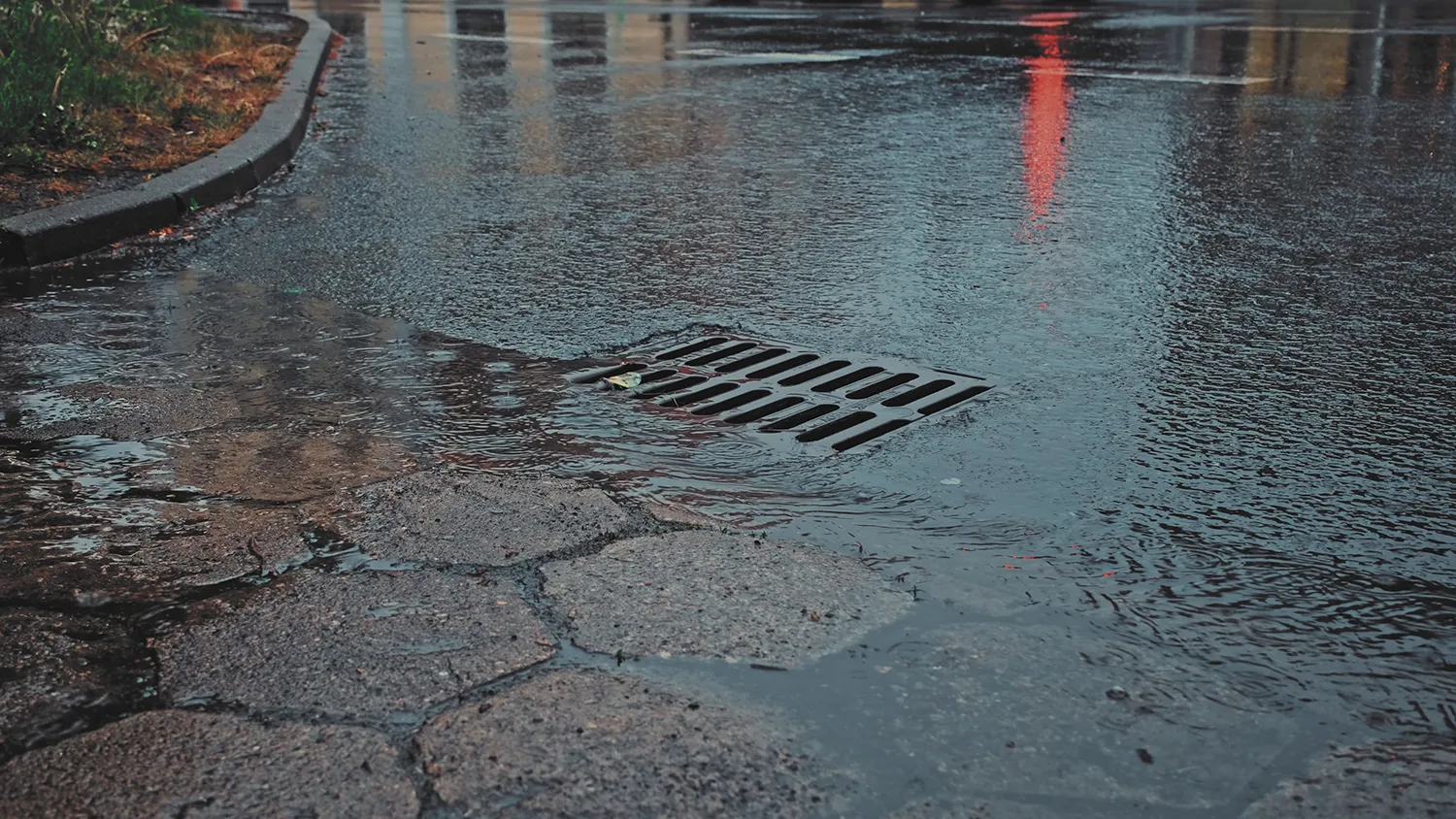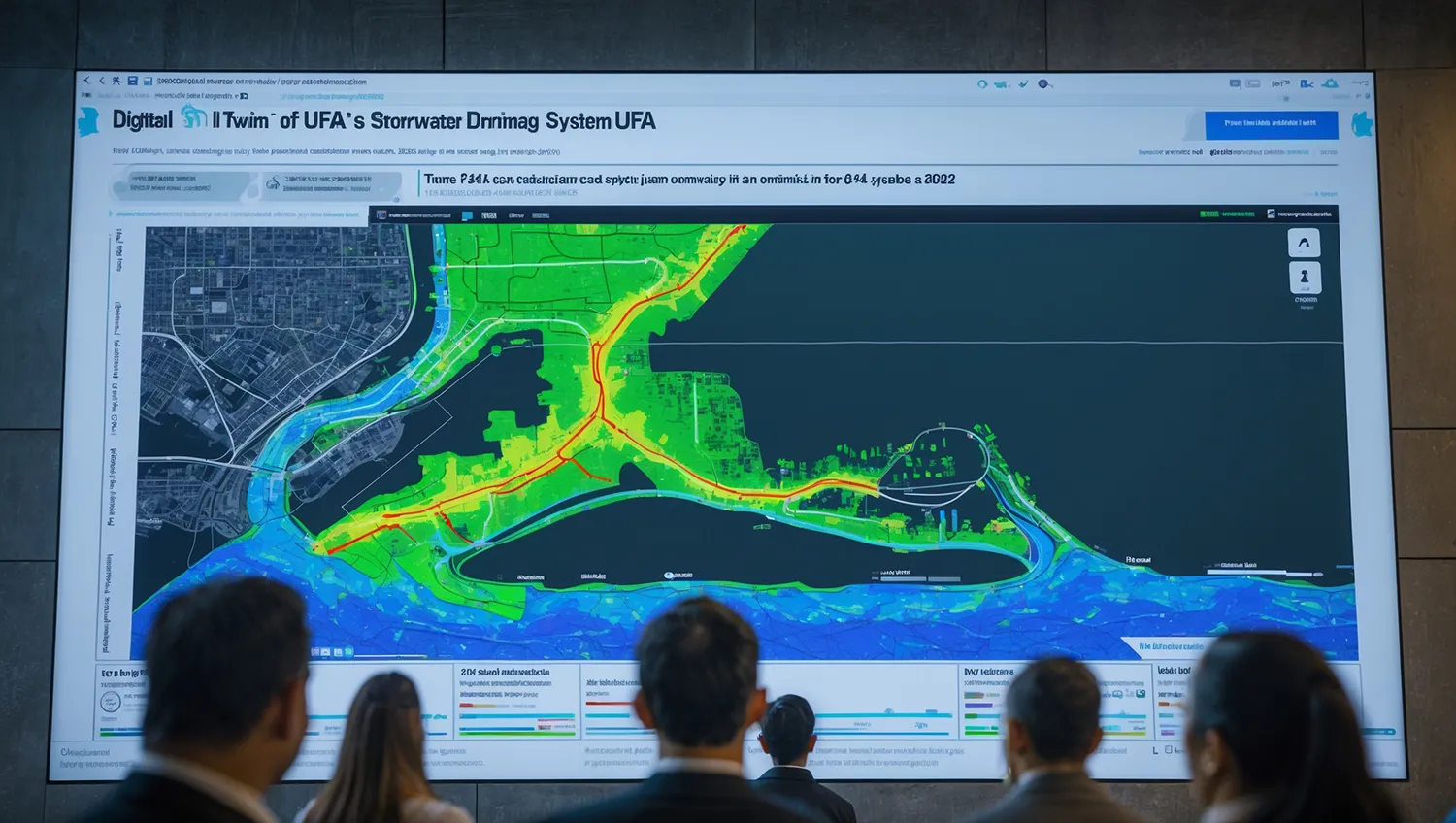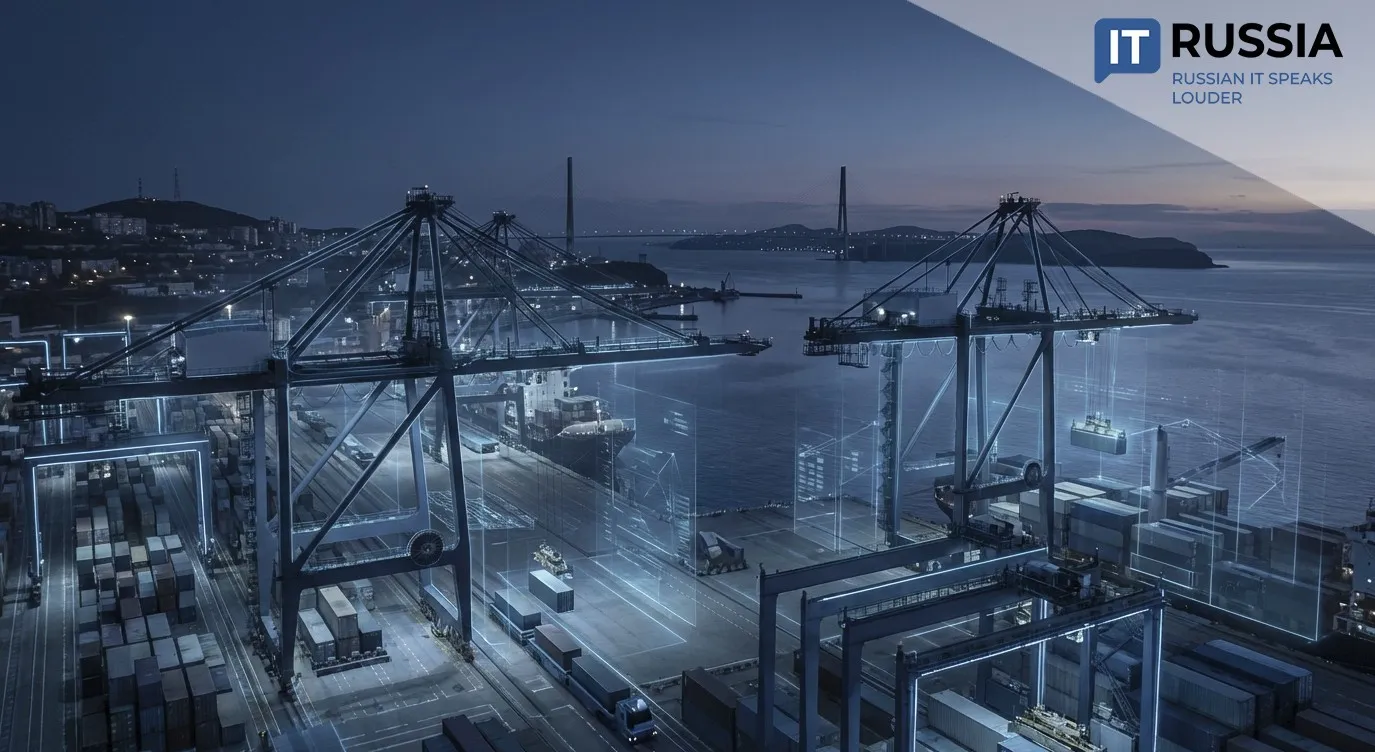Ufa Builds a Digital Twin of Its Stormwater System to Prevent Flooding
The city of Ufa has launched a project to tackle one of its most pressing urban problems — recurring street flooding after heavy rains. A contract has been announced to design a unified stormwater drainage scheme, to create its digital hydraulic model. Beyond local benefits, the initiative positions Ufa as a pioneer in adapting infrastructure to climate risks.

Stormwater Under Digital Control
The contract’s initial value is 68.2 million rubles (approx. $817,000) and will be executed in two phases. The first, to be completed by December 15, 2025, involves a comprehensive survey of existing networks and creation of an electronic “digital twin.” This virtual replica will allow engineers to simulate various rainfall scenarios and assess which streets are most at risk of flooding versus where infrastructure can withstand the load.
The second phase due by November 30, 2026 will produce a long-term stormwater management plan extending to 2042. It will include feasibility studies, load forecasts, wastewater balance, and a detailed construction and reconstruction roadmap. For the first time, the city will have a scientifically grounded tool for managing drainage on a long-term basis.

Toward Flood-Free Streets
For Ufa, a city of 1.5 million that suffers flood damage every year — sometimes multiple times a season — the project is critical. It is designed to reduce property damage, improve traffic safety, and enhance predictability for municipal services.
On a broader scale, the initiative fits into Russia’s “Smart City” program. The digital model is expected to integrate with dispatch systems, smart water-level sensors, and predictive collector cleaning. This marks a shift from reactive emergency response to proactive, data-driven infrastructure management.

Billions Flow into Water Utility Digitalization
Ufa’s project is part of a wider national trend. According to Rusatom Infrastructure Solutions, between 2020 and 2023, Russian water and wastewater utilities signed 1,340 IT contracts. Annual spending on digital projects reaches 5–6 billion rubles (approx. $60–72 million).
In summer 2025, Irkutsk also launched efforts to build a digital model of its stormwater system. Ryazan followed with a tender for a surface water drainage scheme and model worth 19.3 million rubles (approx. $231,000). These examples illustrate how cities increasingly rely on digital tools to adapt to growing climate risks.
The Main Challenge: Infrastructure Condition
Experts highlight the maturity of Ufa’s approach: the combination of “inventory — digital model — reconstruction plan” is the only sustainable way to address chronic flooding. A 20-year planning horizon allows synchronization of stormwater upgrades with road and urban improvement projects.

Next steps include large-scale inspections of networks, including teleinspection, followed by publication of the scheme and integration of problem sites into investment programs. Risks remain, however, such as incomplete baseline data (including abandoned networks), the need for close coordination with other municipal services, and — most importantly — adequate funding for implementation, given the heavy wear of existing infrastructure. Still, phased execution and a precise digital model help mitigate these risks and steadily move the city toward resilience against extreme weather.










































